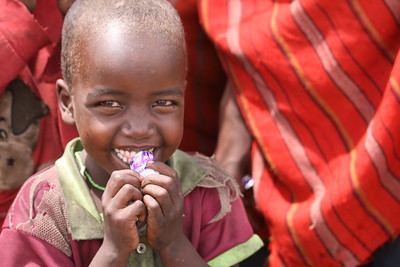8 Facts About Childhood Cancer in Kenya

The World Health Organization (WHO) has ranked cancer as a leading case of death in children. Globally, the leading types of childhood cancers are cancer of the white blood cells and brain tumors. In Sub-Saharan Africa, the most common types are non-Hodgkins lymphoma, kidney cancer and bone marrow cancer. This article explains eight facts about childhood cancer in Kenya.
8 Facts About Childhood Cancer in Kenya
- Child Cancer Causes: According to the American Cancer Society, while known lifestyle-related factors can increase the risk of developing cancer in adults, the same is not true for children. Dr. William Macharia, a pediatrician based in Nairobi, Kenya, explained that the peak age of childhood cancer is between 3 and 7 years old which is not enough time for environmental factors to cause cancer. Instead, many believe that wrong cell division and multiplication after conception is the cause.
- Childhood Cancer Survival Rate: Only 20 percent of children with cancer in Kenya survive. This is in contrast to the developed countries where up to 80 percent of children with cancer survive. Once again, one can attribute this to the late diagnosis as well as the lack of specialized training and other challenges children face in getting treatment.
- Hospice Care Kenya: Hospice Care Kenya reports that only 1 percent of children in Kenya have access to appropriate palliative care. A large majority of children with cancer, therefore, die in pain and isolation. Hospice Care Kenya is working to improve palliative care in Kenya so that children could receive appropriate care which could enhance their quality of life and death.
- Radiation and Chemotherapy: One of the biggest challenges in treating childhood cancer is that radiation and chemotherapy have a lasting, damaging effect on children’s bodies. A study in the Journal of Clinical Oncology shows that by the age of 50, more than half of those who survived childhood cancer experience a severe, disabling or life-threatening event and this could include death. This shows that more research is necessary to develop better treatment and care models for children diagnosed with cancer.
- Financial Challenges: One of the reasons why childhood cancer in Kenya does not receive diagnosis or treatment is because families experience financial difficulties in dealing with it. To begin with, most of the medical facilities where treatment is available are in urban centers so those from rural areas have to travel long distances to access them. Additionally, the cost of treatment, medicine and health insurance is too high for families to afford. When faced with the difficult choice of paying for the sick child and clothing, feeding and educating the rest of the family, families often choose the latter. World Child Cancer reports that almost 30 percent of children who begin treatment do not complete it.
- Limited Medical Training: There is a lack of specialized training of medical practitioners which leads to late diagnosis of childhood cancer in Kenya. By the time most children have a cancer diagnosis, the illness is already in its advanced stages. This is unfortunate because when people know they have cancer early enough, they can obtain treatment or at least manage the disease.
- The Global Initiative for Childhood Cancer and Shoe4Africa: The WHO announced the Global Initiative for Childhood Cancer in September 2018. The initiative aims to reach a survival rate of at least 60 percent for children with cancer by 2030. Shoe4Africa plans to start Africa’s first children’s cancer hospital in Eldoret, Kenya. The organization opened Sub-Saharan Africa’s second public children’s hospital in Eldoret and currently, 400 patients receive treatment at the hospital every day.
- Funding for Cancer Treatment: The government of Kenya provides funding to the Moi Teaching and Referral Hospital, which diagnoses over 100 children with cancer in a year. While this helps to ease the burden for families, it is not enough to cover all the costs. The majority of patients, therefore, have to pay out-of-pocket for their medical expenses. In Kenyatta National Hospital, the largest hospital in Kenya, the Israeli embassy renovated and equipped the children’s cancer wards to ensure that the children are comfortable while seeking treatment.
There is an urgent need for different sectors to come together and set up effective ways of dealing with childhood cancer in Kenya. These methods must also be affordable to all citizens. Kenyans can look to the successes of developed countries as an example. Beyond that, the public needs to receive more education on childhood cancers. This can happen through public health awareness campaigns such as those Kenya used to successfully inform and educate the public on diseases such as HIV/AIDS and tuberculosis.
– Sophia Wanyonyi
Photo: Flickr
